At a basic level, Marble Duel does to the Zuma formula what Puzzle Quest did for Bejeweled, though with a bit more finesse. The matching mechanics will be immediately familiar to anyone who has ever played Zuma and will certainly be easy to pick up and learn for any who haven’t, but the focus on combat and light RPG elements give this game a surprising amount of strategic depth. With over 100 levels available and the promise of more coming at some point in the future there is a huge amount of content here and Marble Duel does a remarkably fantastic job of adding in new twists whenever the formula starts to get stale.
The standard setup of Marble Duel keeps things simple and straightforward. Level progression is linear with the exception of four optional levels, every level has three experience-granting stars to earn based on how many full rounds it takes you to defeat your opponent, and the story largely exists as an excuse for the fights (an orphan girl named Evy gets transported to a fantasy land where she must defeat an evil witch named Sandra to get back to her own world). Each level begins with a light tracing the path or paths upon which the ‘marbles’ will come rolling out onto the field. As the goal is to defeat your opponent and not to clear the board, the paths immediately become filled with marbles and any space created from matching three or more marbles of the same color is quickly filled as new marbles roll in and push existing once forward to fill the gap. You control a marble launcher which can be moved horizontally along the bottom of the screen with the mouse; left clicking launches a marble straight forward while right clicking swaps between two different marbles. Most importantly, your opponent is positioned at the top of the screen. This last point may sound minor, but the choice to use this form of positioning instead of, for example, placing you and your opponent in a shared central location or having you take turns shooting from the bottom of the screen, radically changes the gameplay dynamics because nearly every level will contain parts of the field which only you or your opponent can access; moving a marble out of an opponent’s reach by making a combo can be just as important as the benefits of the combo itself.
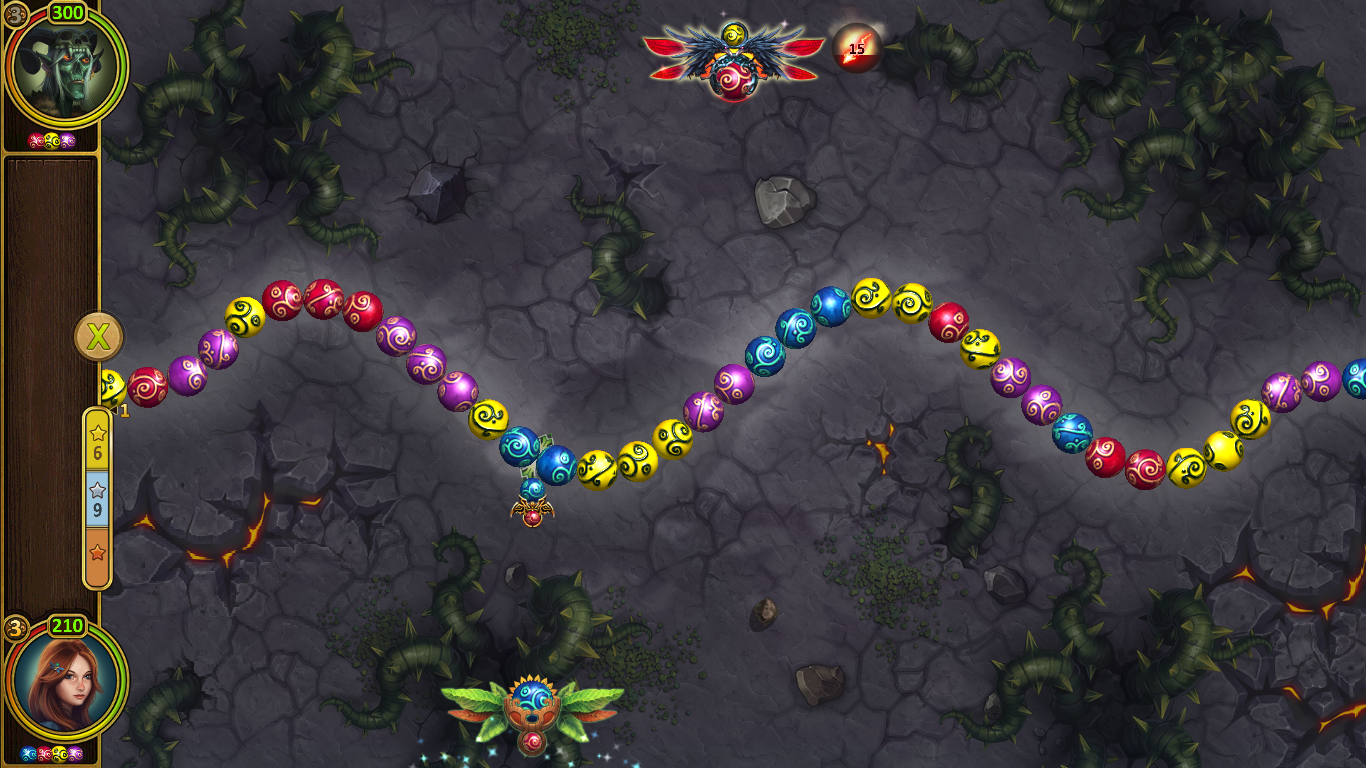
Like in most puzzle games of this type, you perform various actions depending on which colors you match and the strength of each action is based largely upon the size of the matching cluster of marbles. Combat is broken up into rounds (you always go first) and generally in the early levels you get to shoot out two marbles and then your opponent gets two shots and in the later levels this is expanded to allow for potentially setting up larger combos with three shots each. However, the trick here is that you can earn extra shots by creating chains of three or more matches (the number of marbles in each match doesn’t matter); creating a chain of three matches with a single shot nets you one additional shot, four matches grants two bonus shots, three for five, and so on while the AI only ever gets one additional shot for any chain of three or more matches, though it is still free to perform several of these lengthy chains in a row.
The game starts as simplistically as possible with only red marbles, which deal damage to your opponent when matched, and white marbles, which do absolutely nothing at all other than to contribute to chains. Over the course of roughly the first half of the game you are gradually introduced to the other types of marbles, which are green healing marbles, blue marbles which grant you a temporary shield, purple marbles which boost the damage of your next attack, yellow marbles which launch a counterattack, and black marbles which deal a small amount of unpreventable damage to whoever matches them, which can still be worth it if you want to create a chain.

Blue and yellow marbles are of particular note because of just how they interact with red marble attacks and each other. The shield buff granted by blue marbles prevents a percentage of damage from the next attack you take (even if it’s a counterattack) and, like with yellow and purple marbles, this number grows as you make additional matches for this color. This number can actually go well over 100% to allow it to block additional attacks (ex: a 130% shield will fully block one attack and then block 30% of the damage from the next attack). Meanwhile, yellow orbs build up the counterattack percentage far more quickly and can also go well above 100%, but automatically expend their full charge in a single shot and the damage is based on how strong the initial attack aimed at you was and not how much damage you actually took (ex: if you have an 80% shield and a 200% counterattack and your opponent launches a 50 damage attack at you the result would be that your shield gets knocked out, you only take 10 damage since 80% of it was mitigated, and you launch a 100 damage counterattack). As a result of these shield and counterattack dynamics, gameplay becomes more involved than the standard Puzzle Quest-style dynamics of constantly aiming for the largest matches possible. If your opponent has a strong shield or counterattack up you may want to deliberately go after a small match to knock out the shield while minimizing the impact of the counterattack and then move on to launching a stronger attack against your now-defenseless foe or you may want to ignore red marbles to focus on building up your own shield and counterattack and bait the AI into slaughtering itself on your counters.
Gameplay is changed up by more than just the introduction of new marbles and level layouts. Though red marbles are always present since they are needed in order to attack, one or two of the other four types of ability-granting marbles may not be present, black marbles are fairly uncommon, and white marbles are rare after the early levels. In addition, even when every type of marble is present they are usually divided between multiple paths, so one string of marbles may consist of red, white, and yellow while a different trail contains black, yellow, purple, and blue. On top of this, the marbles which you and your opponent have access to vary between levels and with this Marble Duel sometimes runs into a luck issue.
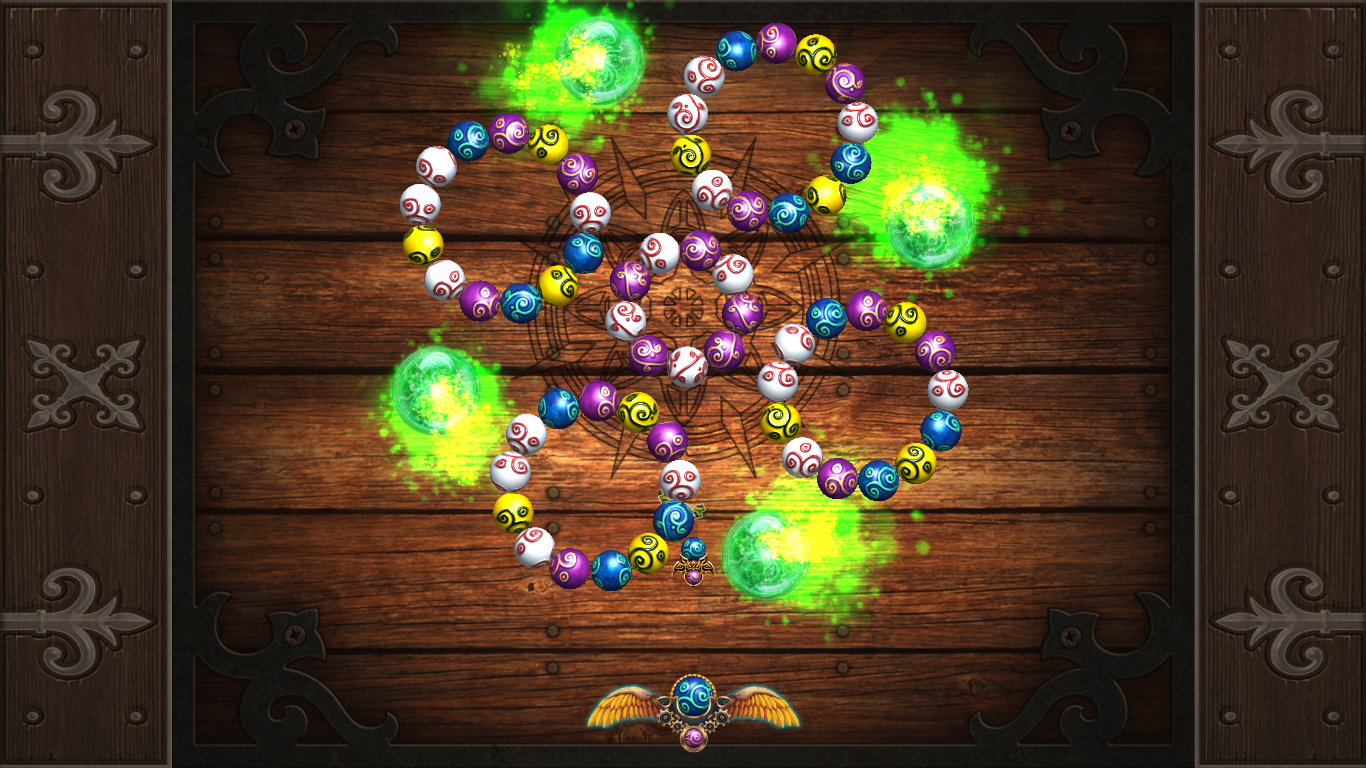
There isn’t usually a problem when Evy can draw three or fewer different types of marbles, but frustration can set in when this number is expanded to four or five as it becomes incredibly difficult to reliably set up chains or even make basic matches. This issue is significantly magnified during levels where Evy has access to four or five colors while her opponent has two or three. For example, if Evy has a chance of drawing red, yellow, blue, and purple marbles and her opponent can draw red, yellow, and white marbles you can easily find yourself in a situation where you are dealt a string of shields and attack boosts without being able to effectively attack while your opponent chips away at your shields and health with a barrage of attacks, builds up a nasty counterattack, clogs up your combos with white marbles, and probably even gains some shielding by weaving blue marbles into their chains. In such situations the best course of action usually is to pay attention to which two marbles your opponent will start their turn with and use your own marbles to break up groups you think your opponent will try to aim for and hope Luck decides to favor you with a useful combination before you run out of health. Thankfully, levels which feel like exercises in frustration only account for about 10-15% of the total content and are generally spread out, but even if the vast majority of the content is enjoyable and more than counterbalances these levels, they are still common enough and unenjoyable enough that I definitely can’t let them completely slide; nothing quite kills the pacing of a game like periodically running into the equivalent of slamming your head into a brick wall for half an hour straight (or several hours on and off in the case of Level 89, which is particularly hateful).
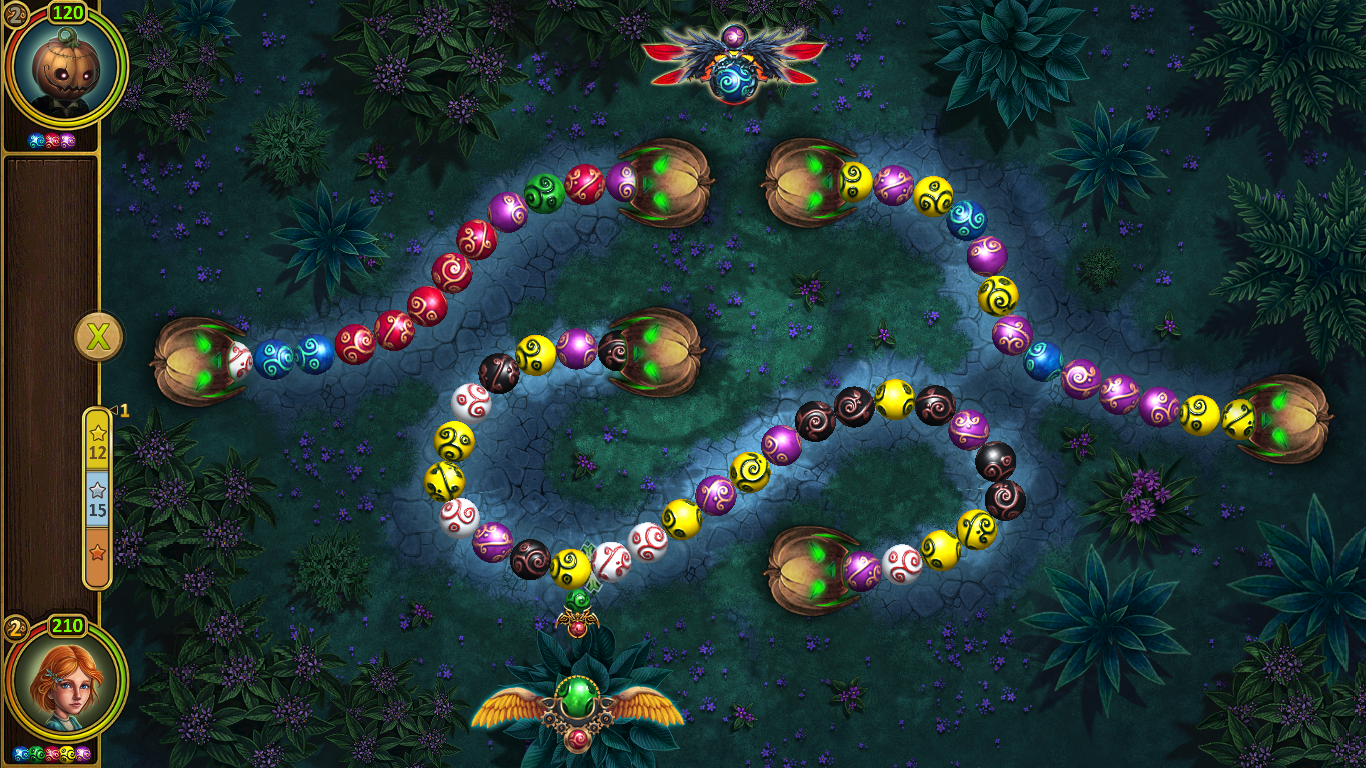
Before moving back to discussing more positive parts of the game, there are two other issues I want to address. Don’t worry though, they’re nowhere near as significant as that last one, though one of them is somewhat related to it. First, problems related to bad luck are partially caused by what you can and cannot draw like I discussed above, but you will still sometimes run into luck issues even in the more balanced levels largely because you can’t see what type of marble you’ll be drawing next. Yes, you have access to two marbles at any given time, but choosing which one to use and where to use it can be an issue when you have no idea what type of marble will be replacing it and you don’t often have the luxury of leaving a large chain ‘almost completely’ since your opponent will certainly make use of it if they can; the inclusion of an indicator for the next marble the player will draw would have likely gone a long way towards mitigating the impact of luck.
The second issue involves the clarity and functionality around the leveling system, so I’ll quickly go over the system first. Near the start of this article I mentioned that each level has three experience-granting stars which you can earn by defeating the opponent within a certain number of rounds. Technically, these stars grant spendable crystals instead of experience points and you only get these the first time you earn each star so you can’t grind in levels you’ve already mastered. These points can in turn be used to boost the effectiveness of any of the five types of marbles (the cap on just how high you can raise the shield and counterattack percentages also goes up) or to boost Evy’s maximum health. You can also freely redistribute crystals at any time between levels, which is actually great since there’s no reason to have points in a marble type if it doesn’t even appear in the current level. The clarity issue with this system comes up in that it doesn’t provide any information on just how much each level is helping, so you can’t tell just what your new cap for the shield and counterattack is or exactly how much more quickly you gain these percentages until you try them out in a level. Furthermore, leveling up Evy’s health is odd in that all the way up to rank 14 each rank gives Evy a boost of 5 health, but at rank 15 and above this boost shoots up to 30 health per rank; it’s partially my fault for not experimenting more, but I went through a good chunk of the middle of the game fighting enemies with over 100 more health than Evy had and I wish there was a prior indication of this virtually vital leap in the effectiveness of ranking up health. As to the functionality issue of the leveling system, that is the fact that you must redistribute all of your spent crystals at once whenever you choose to do so (and you will be doing this quite a bit). Thus, if you want to swap a level or two in attack power for a few more points in healing, you have to redistribute all of your points in every stat. Having individual arrows for decreasing stat ranks and/or allowing you to save ‘favorite’ distributions would have eliminated this annoyance.
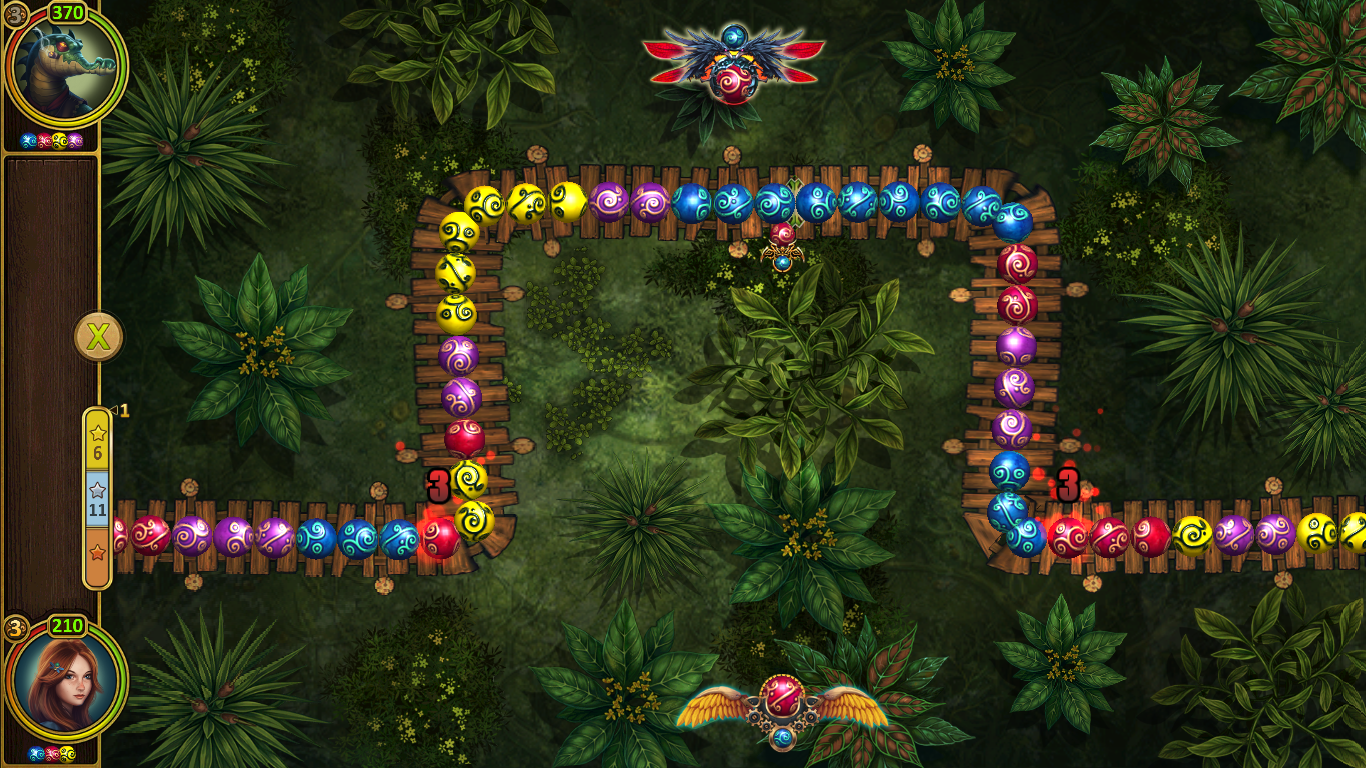
With those complaints out of the way, let me move on to at last discussing my favorite aspect of Marble Duel; this is a game which is willing to take risks with changing up its formula. Beyond adding in new types of marbles and changing up which marbles are in which level and how frequently they appear, much more substantial changes are gradually introduced. For example, the marbles in most levels don’t move other than to fill in gaps, but in a few levels the marbles on one or more of the paths will move in a circuit, allowing for easier chains while adding in a timing element. Dual-color marbles also come into play later on which grant the full benefits of two different types of marbles, but they can only be matched with themselves.
You also generally fight a specific opponent for each stretch of the journey and these opponents bring along more than just stat and aesthetic changes as the fights against them often are themed around them. For example, fights against a pyromaniac enemy involve a large quantity of the explosive black marbles while fights against a dancing pumpkin enemy later on tend to have fancifully interlaced paths with a higher frequency than usual of levels with moving paths. Later foes even have entirely unique elements to their fights, such as a witch who periodically launches attacks at the start of her turn after they have charged up and a crocodile with ‘cursed’ marbles which will immediately kill you if you don’t remove them within a certain number of turns. Lastly, there are a handful of minigames scattered around which usually involve eliminating rings of marbles without letting them get too big, often with a twist of some sort; these minigames are rare enough that they don’t get in the way of the primary form of gameplay and most of them are actually surprisingly well-done.
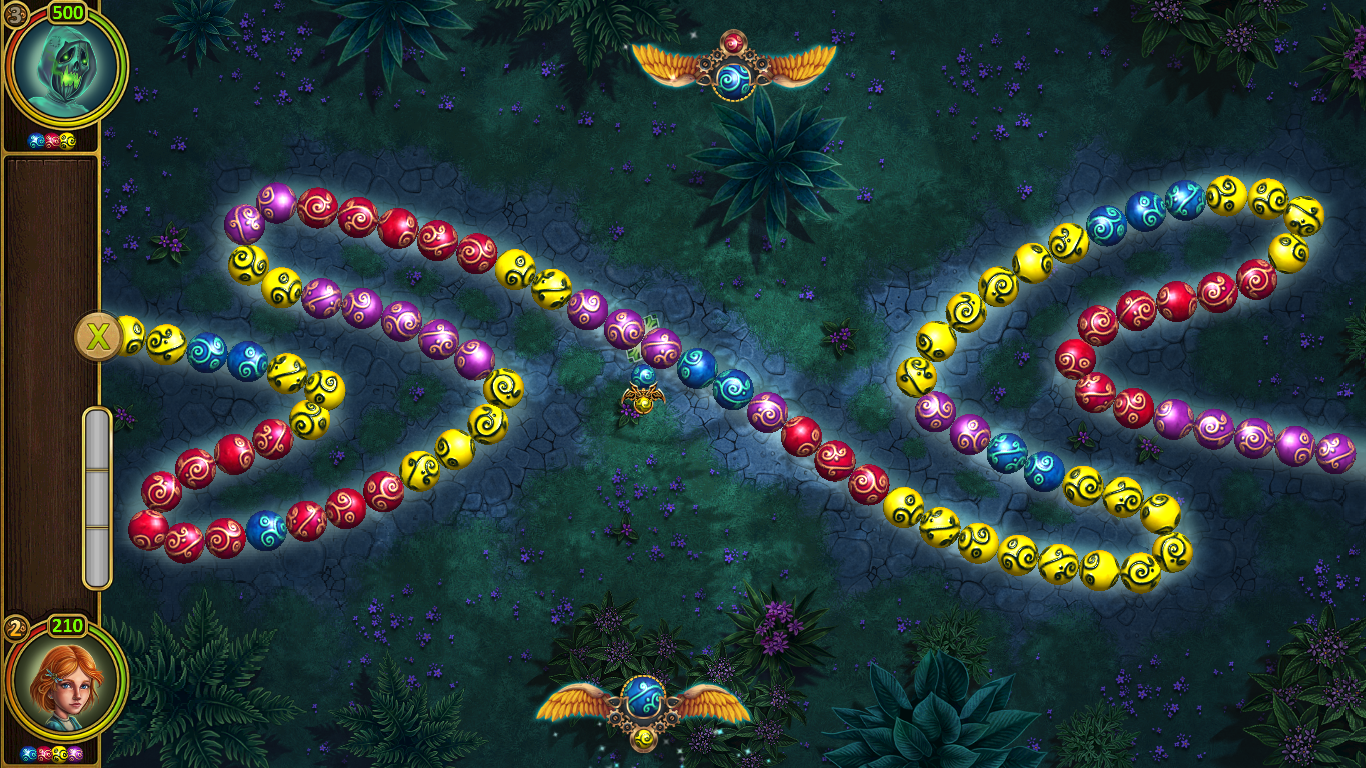
Marble Duel definitely has some real issues and you may very well want to give it a pass if you don’t want to deal with the occasional appearance of a frustrating roadblock. However, I have definitely enjoyed the vast majority of my time with the game and I think anyone willing to tolerate a few bad levels will enjoy what this game has to offer as well.